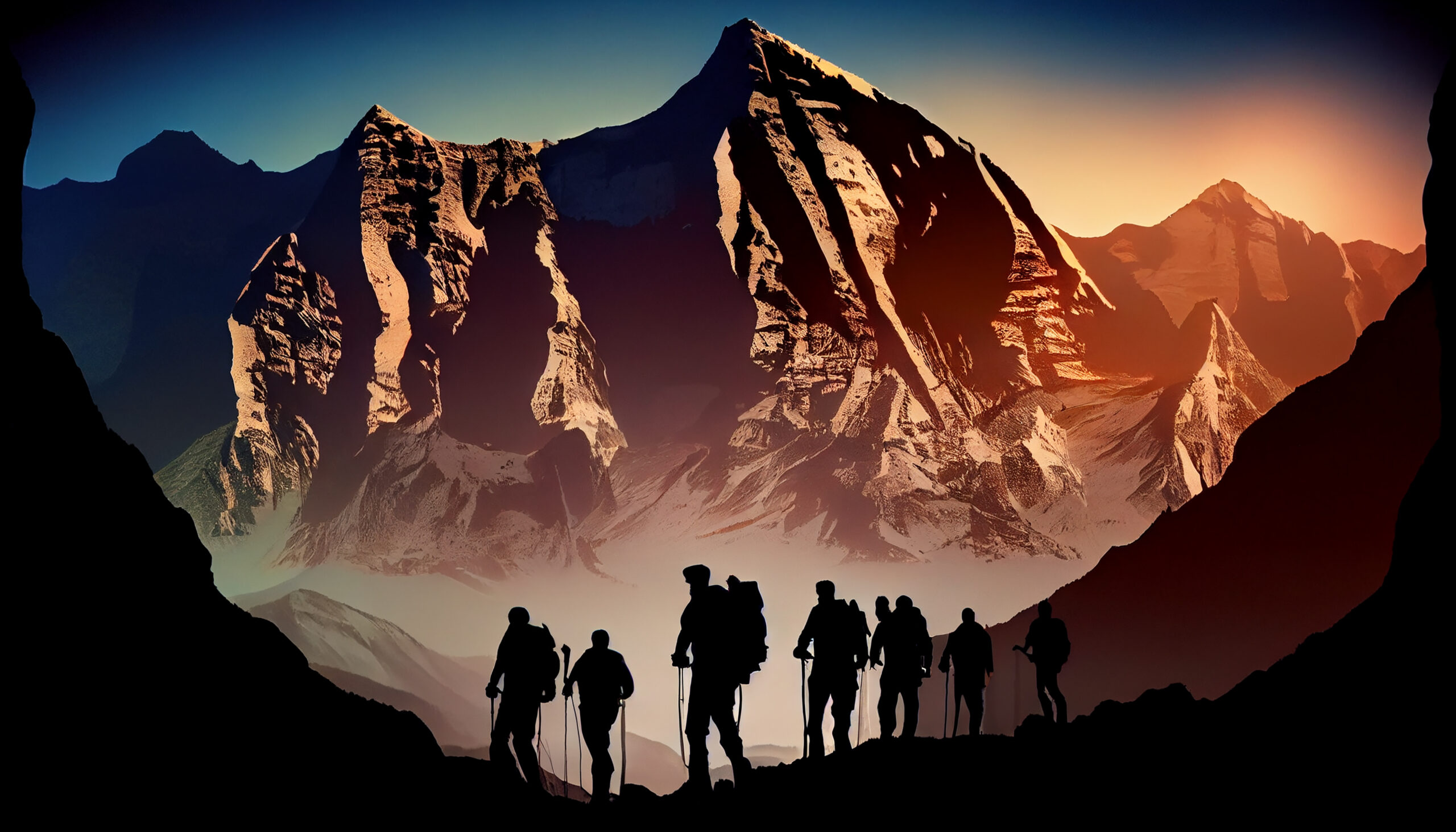Best Practices for Trekking at the Altitude of Ali Bedni Bugyal
Trekking in the mountains can be one of the most exhilarating experiences, offering breathtaking views and a sense of adventure that is hard to find elsewhere. One of the stunning trekking destinations in India is Ali Bedni Bugyal, situated in the Garhwal Himalayas of Uttarakhand. Known for its lush meadows and panoramic views, the trek has gained popularity among adventure enthusiasts. However, trekking at high altitudes, such as the Ali Bedni Bugyal Trek altitude of approximately 3,350 meters (around 11,000 feet), comes with its own set of challenges and requires proper preparation. In this article, we will explore the best practices for trekking at this altitude to ensure a safe and enjoyable experience.
Understanding the Ali Bedni Bugyal Trek
Before diving into best practices, it’s essential to understand what makes the Ali Bedni Bugyal Trek unique. The trek typically starts from Lohajung and takes trekkers through dense forests, charming villages, and vast meadows. The journey offers stunning views of the surrounding peaks, including Nanda Ghunti and Trishul, making it a visual delight.
The trek can be completed in about 6 to 7 days, depending on the pace of the trekkers and the itinerary. As trekkers ascend to higher altitudes, the risk of altitude sickness increases. Thus, being aware of the altitude and how to cope with it is crucial for a successful trekking experience.
Do you want to visit Char Dham? Char Dham Travel Agent is the best place to plan your Char Dham tour. You can book the tour from here.
Acclimatization is Key
One of the most critical aspects of trekking at high altitudes is acclimatization. When you ascend to higher elevations, the air pressure decreases, leading to lower oxygen levels. This can affect your body in several ways, and acclimatization helps your body adjust to these changes.
Best Practices:
- Gradual Ascent: Aim for a slow and steady ascent. Avoid pushing yourself to higher altitudes too quickly. Ideally, you should ascend no more than 300-500 meters (about 1,000-1,600 feet) in a day once you reach 2,500 meters (around 8,200 feet).
- Rest Days: Incorporate rest days in your itinerary, especially after reaching significant altitude gains. This allows your body to adjust and recover.
- Listen to Your Body: Pay attention to how you feel. Symptoms of altitude sickness include headaches, dizziness, nausea, and shortness of breath. If you experience severe symptoms, descend to a lower altitude immediately.
Stay Hydrated
Hydration is essential at any altitude, but it becomes even more critical at higher elevations. The air is drier, and you may not realize how much fluid your body is losing. Dehydration can worsen the effects of altitude sickness.
Would you like to visit Indiar? A tour operator in India is the best place to plan your tour. You can book a tour from here.
Best Practices:
- Drink Plenty of Water: Aim to drink at least 3 to 4 liters of water daily. Carry a reusable water bottle and refill it regularly from safe sources.
- Electrolyte Drinks: Consider adding electrolyte tablets or powders to your water. They help replenish essential salts lost through sweat and keep you hydrated.
- Avoid Excessive Caffeine and Alcohol: These can lead to dehydration, so it’s best to limit your intake of caffeinated and alcoholic beverages.
Eat Well
Proper nutrition is vital for maintaining energy levels during your trek. At higher altitudes, your body requires more energy, and eating a balanced diet can help.
Best Practices:
Would you like to visit Haridwar? Travel agents in Haridwar are the best place to plan your trip. You can book your tour right here.
- High-Calorie Foods: Consume calorie-dense foods such as nuts, dried fruits, energy bars, and granola. They provide the necessary energy without taking up too much space in your backpack.
- Complex Carbohydrates: Incorporate whole grains, oats, and pasta into your meals for sustained energy release.
- Protein Intake: Ensure you have adequate protein in your diet to aid muscle recovery. Foods like lentils, beans, and lean meats are excellent choices.
Dress Appropriately
Weather conditions can change rapidly in the mountains, and proper clothing can make a significant difference in your comfort and safety.
Best Practices:
- Layering System: Dress in layers to manage your body temperature effectively. Use a moisture-wicking base layer, an insulating mid-layer, and a waterproof outer layer.
- Quality Footwear: Invest in sturdy trekking boots with good ankle support and traction. Break them in before the trek to avoid blisters.
- Accessories: Don’t forget essential accessories like gloves, a warm hat, and sunglasses to protect against the sun’s glare and cold winds.
Physical Preparation
Physical fitness is crucial for a successful trek, especially at high altitudes. Being in good shape will help you cope with the demands of the trek.
Best Practices:
- Cardiovascular Training: Incorporate activities like running, cycling, or swimming into your routine to build endurance.
- Strength Training: Focus on building strength in your legs, core, and back. Exercises like squats, lunges, and planks can be beneficial.
- Practice Hiking: Try to go on shorter hikes or walks with a loaded backpack to simulate the trekking experience.
Mental Preparedness
Trekking at high altitudes can be mentally challenging. Having a positive mindset and mental resilience can make a significant difference in your experience.
Best Practices:
- Set Realistic Goals: Understand that the trek will have its challenges, and it’s essential to set achievable goals for each day.
- Stay Positive: Focus on the beauty of the surroundings and the experience rather than the difficulties you face.
- Meditation and Breathing Techniques: Practice meditation or deep breathing exercises to manage anxiety and stress during the trek.
Stay Informed
Knowledge is power, especially when it comes to trekking in remote areas. Being informed about the trek can enhance your experience and safety.
Best Practices:
- Research the Trek: Familiarize yourself with the Ali Bedni Bugyal Trek altitude, routes, and weather conditions. Understanding what to expect can help you prepare better.
- Hire Local Guides: Consider hiring experienced local guides who know the area well. They can provide valuable insights and help navigate any challenges you may encounter.
Emergency Preparedness
Being prepared for emergencies is essential when trekking at high altitudes. Accidents can happen, and having a plan can save lives.
Best Practices:
- Carry a First Aid Kit: Always have a well-stocked first aid kit that includes items for treating altitude sickness, cuts, and bruises.
- Know Emergency Numbers: Familiarize yourself with local emergency contacts and procedures in case of an emergency.
- Communication Devices: Carry a fully charged mobile phone or a satellite phone for communication in case of emergencies.
Environmental Responsibility
As trekkers, it’s our responsibility to protect the natural beauty we enjoy. Practicing responsible trekking helps preserve the environment for future generations.
Best Practices:
- Leave No Trace: Follow the Leave No Trace principles. Pack out all waste, including food scraps and biodegradable items.
- Stick to Trails: Stay on established trails to minimize your impact on the environment and prevent erosion.
- Respect Local Culture: Be mindful of local customs and traditions. Engage with local communities respectfully and support their livelihoods.
Conclusion
Trekking at the altitude of Ali Bedni Bugyal is an unforgettable experience, offering stunning landscapes and a chance to connect with nature. However, proper preparation and knowledge are crucial to ensure your safety and enjoyment during the trek. By following these best practices—acclimatizing, staying hydrated, eating well, dressing appropriately, preparing physically and mentally, staying informed, being prepared for emergencies, and practicing environmental responsibility—you can have a fulfilling and safe trekking experience.







